Invest in this 1987 Countach restoration, get a Valentino Balboni thrill ride in it
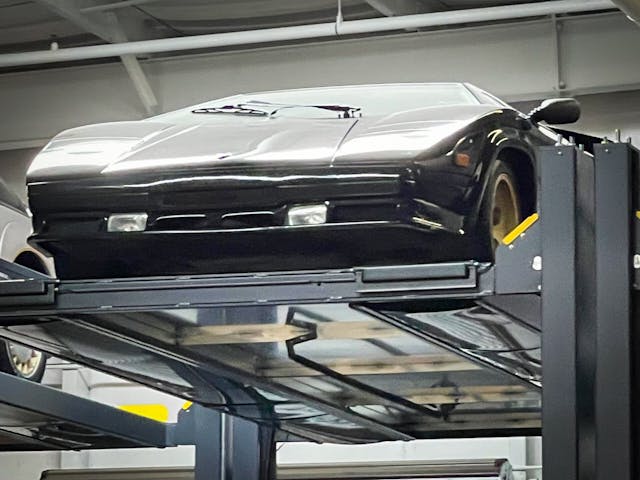
Like a lot of kids, Chip Bulloch had a poster of a red Lamborghini Countach on the wall of his childhood bedroom. But unlike most other young fanboys, he never grew outgrew his infatuation.
He bought his first Countach when he was only 29, and he acquired his second one a decade or so later. A few years after that, even though he knew nothing about filmmaking, he wrote, shot, edited and produced a full-length Lamborghini documentary. He’s such a true believer that when he decided, last year, to commission a ground-up restoration of his black-on-tan 1987 Quattrovalvole, he entrusted the work to a small team of retired Lamborghini mechanics and artisans in Italy. Their leader: legendary factory test driver Valentino Balboni.


Bulloch is a crazed Countach fanatic, yes, but he is also a self-described serial entrepreneur with an eye on the emerging cryptocurrency industry. He realized that, in addition to being a flamboyant objet d’art, his car also represented an investment opportunity that might appeal to millennials and Gen Xers looking to stake a claim in the new digital trading economy.
“I’m going to fractionally divide the car and sell shares of it,” Bulloch says. “People who buy a share will get a receipt and an NFT (non-fungible token) that can be sold or traded or whatever. As the car is being restored, the value will go up. When it’s finished, buyers will get a ride in the car with Valentino and a tour of his shop. So there’s an experiential part along with the NFT.”
Crazy, right? No crazier than the original Countach, which debuted in concept car form to stunned crowds at the Geneva Motor Show in 1971. Three years later, into production as the LP 400 “Periscopio.”
Penned by designer Marcelo Gandini, the Countach didn’t just defy contemporary design language; it eviscerated conventional wisdom by establishing a new vocabulary of angular, over-the-top styling. It’s not hyperbole to say that the Countach reshaped the world’s idea of a supercar.
A half-century later, Balboni still remembers his first impression of the car. “I thought it would be impossible to drive on the street because it looked like an unidentified flying object,” he says.
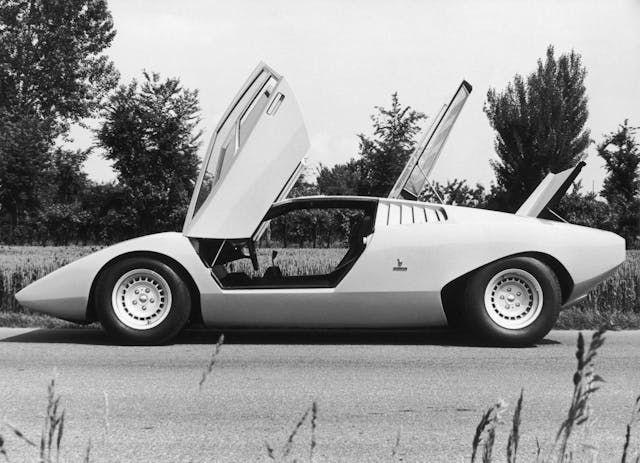

With low-profile tires, no aerodynamic aids and the massive, mid-mounted Giotto Bizzarrini-designed V-12 adding so much weight to the rear of the car, the first Countaches were notoriously unstable. Bad things could happen very, very quickly. “At first, it was very difficult to drive,” says Balboni, a man who routinely tested cars at 160 miles per hour on the two-lane roads near the Lamborghini factory in Sant’Agata Bolognese.
In 1978, several of the car’s most egregious weaknesses were addressed in the new LP 400 S, which benefited from wider Pirelli rubber (necessitating those in-your-face wheel arches), a redesigned suspension, and a wicked rear wing. The LP 500 S for 1982 introduced a new V-12 engine, which saw displacement grow from 3.9 liters to to 4.8 liters. Three years later the V-12 swelled to 5.2 liters and went to a four-valve head, the source of the Quattrovalvole moniker. The Countach story culminated in 1988 with a 25th Anniversary model styled by Horacio Pagani, a man with his own history of over-the-top design.
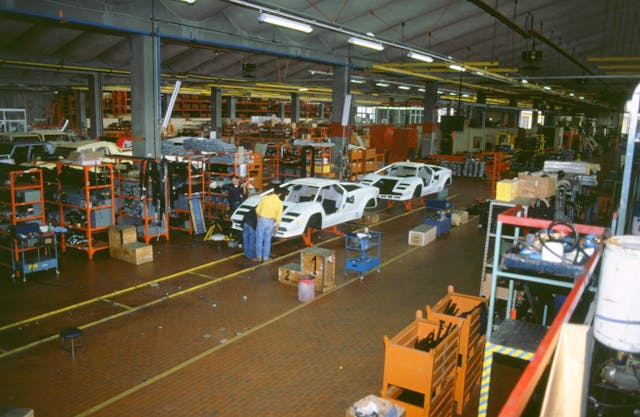
Altogether, roughly 2000 Countaches were built during a 26-year production run. Despite all the changes over the years, the car remained remarkably hard to climb into and virtually impossible to see out of. But these flaws were a small price to pay for a machine that was so futuristic and otherworldly that it inspired shock and awe among both owners and onlookers.
“It was like driving a fricking spaceship,” Bulloch recalls from his earliest Countach experience. “The first time I took the car out at dusk, I was seeing all these flashes. I couldn’t figure out what was going on. This was before people had cameras in their cell phones. I finally realized that everybody was taking pictures of the car as I was driving by.”
As Bulloch learned more about the Countach, he decided to upgrade to this black Quattrovalvole model around the year 2000. He drove it consistently before embarking on a ground-up restoration in 2008. He’d gotten as far as disassembly when life got in the way, and the project stalled. Then, the Countach sat … and sat … and sat.
It wasn’t until last year that Bulloch began investigating the possibility of spinning things up again. He was trying to decide between two highly respected restoration shops when, purely by serendipity, he had dinner with Balboni after the Concorso Italiano car show during Monterey Car Week.
“Valentino,” Bulloch asked him, “if this was your car, who would you get to restore it?”
“Well,” Balboni said, “I’ve put together a little team in Italy. We have a little shop, and we’re doing restorations of Miuras and Countaches.”
Bulloch didn’t hesitate. “Done!”
Aside from company founder Ferruccio Lamborghini, Balboni is the most famous representative of Automobili Lamborghini. Now 73, he joined the company in 1968 as an apprentice mechanic. Five years later, Ferruccio promoted him to test driver under the tutelage of another company icon, New Zealander Bob Wallace.

Balboni spent four decades at Lamborghini, and after retiring in 2008, he served as a consultant for six more years. Although he is no longer formally attached to the company, he remains close to the marque. “I will never divorce Lamborghini,” he says. “We are still married, but we sleep in different beds.”
A few years ago, Balboni amassed a cadre of ex-Lamborghini employees—some in their 80s—to undertake restorations on a casual basis. “It’s not a real company,” he insists. “We are just some guys who get together to disassemble and reassemble the cars that we worked on 50 and 60 years ago. No one is the boss. We’re old friends.”
Maybe so. Nevertheless, Balboni says the not-company has restored nearly three dozen cars to date. The shop just finished an LP 400 S and is working on two other Countaches, plus a pair of Miuras. “We work only on Lamborghinis because we want to make it easy on ourselves,” Balboni says with a laugh. “We are retired, and we work to increase our pensions.”
For Bulloch, getting Balboni on board was the final piece in his grand plan to resurrect his long-languishing project car. Such an ironclad connection to Lamborghini heritage was also a nice bookend for Bulloch’s strategy of selling shares of his Countach in the form of NFTs.

Bulloch acknowledges that he didn’t invent this investment concept, let alone its appearance in the automotive space. A pioneer in the genre is a company called Rally, which owns a portfolio of collectible assets ranging from Michael Jordan sneakers to 40-year-old whiskey. (Who knew?) These commodities are “securitized”—divided into equity shares that can be bought and traded by investors. At the moment, Rally is offering dozens of cars across a variety of tastes and price points, from a 1955 Porsche 356 Speedster to a 1965 Mustang Fastback and a 2003 Saleen S7.
What makes Bulloch’s deal unique is its value-added component. As he writes on his newly launched website: “Shareholders/NFT owners will be given a first look at videos of the restoration AND, most importantly, an experiential component … ”
For investors who make their own way to Italy, this means access to Balboni’s shop. Bulloch says he also hopes to organize tours of some of the car factories in and around Modena—Lamborghini, Pagani, even Ferrari. But the pièce de résistance will be a thrill ride in the restored Countach, with Balboni manning the con.

How much value do these bonuses really represent? For a Countach devotee, potentially a lot. And, as somebody who’s driven with Balboni in a Lamborghini Diablo SV, I can say that riding shotgun with the master gives you a new perspective on speed. He navigates two-lane highways at go-straight-to-prigione speeds, amid overloaded farm trucks and oncoming traffic.
Bulloch has placed the car in and LLC and subdivided it into 100 shares. (He’ll keep 51 to retain principal ownership.) The first 10 shares will be sold for $8000 apiece, which presupposes an all-in value of $800,000. According to the Hagerty data, the average value of a concours-quality (#1 condition) 1987 Countach is $752,000, while a model in excellent condition (#2) will set you back roughly $640,000. The four 1987 Quattrovalvoles sold on Bring a Trailer last year brought, $550,000, $735,000, $700,000 and $860,000.
Of course, Bulloch’s car will be freshly restored, and Balboni’s imprimatur is arguably worth a premium of some sort. Still, speculating on the supercars of yesteryear is a crapshoot. Shares in Rally’s 1980 Countach, for example have plummeted from an initial offering at $127 in January 2019 to a tick more than $76 as of this writing. Granted, that was an oddball prototype fitted with a turbocharger. But, as ever, investors would be wise to mind the mantra caveat emptor before diving into these waters.
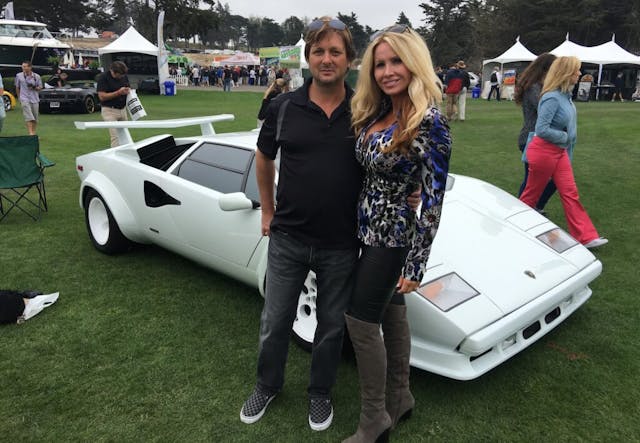
The Countach is insured for $750,000, and in the event that it is wrecked or stolen Bulloch promises he will “make every shareholder whole on their investment.” Bulloch says he “does not plan on selling” the car (i.e. his majority share), but in that event, investors would receive payout on the sale price reflective of their share value.
Bulloch is now finalizing the paperwork to offer shares of the Countach. He plans to ship the car overseas to Italy in February and says the project should be finished in 12 to 14 months. “Restoring Chip’s Countach will be easy,” Balboni says blithely. “We know the product. We know the good points, and we know the weaknesses.”
When the work is completed, Bulloch says, he’ll resist the temptation to bring the car back to his home in Florida. “I’ve come to admire and love Valentino Balboni, and I like the idea of it being under his care,” he says. “I wouldn’t drive the car here in the States. I’d just be afraid of getting into an accident.”
A wreck is never good for a car, after all, even if all you own of it is a digital pie slice.
Check out the Hagerty Media homepage so you don’t miss a single story, or better yet, bookmark it.

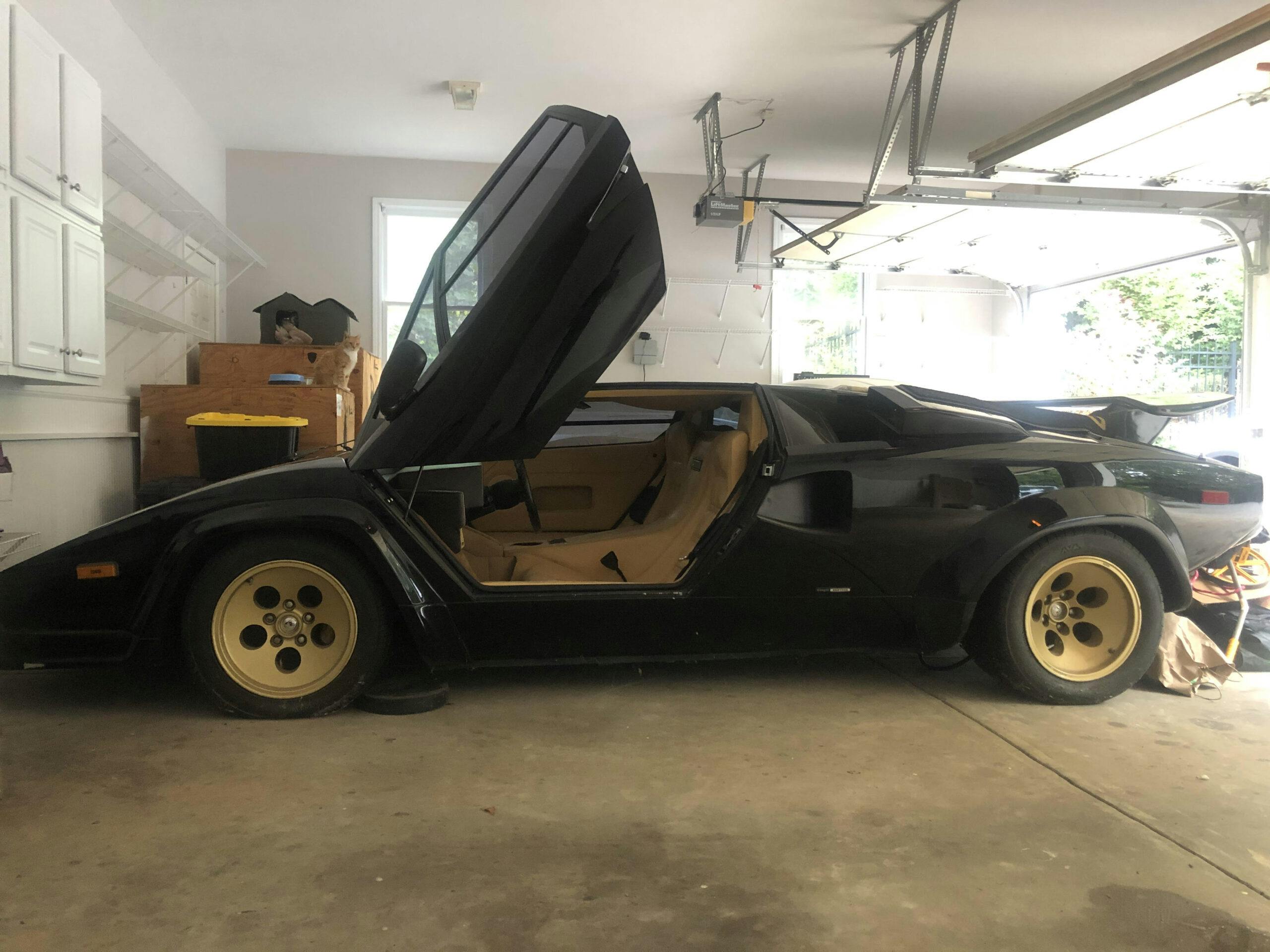
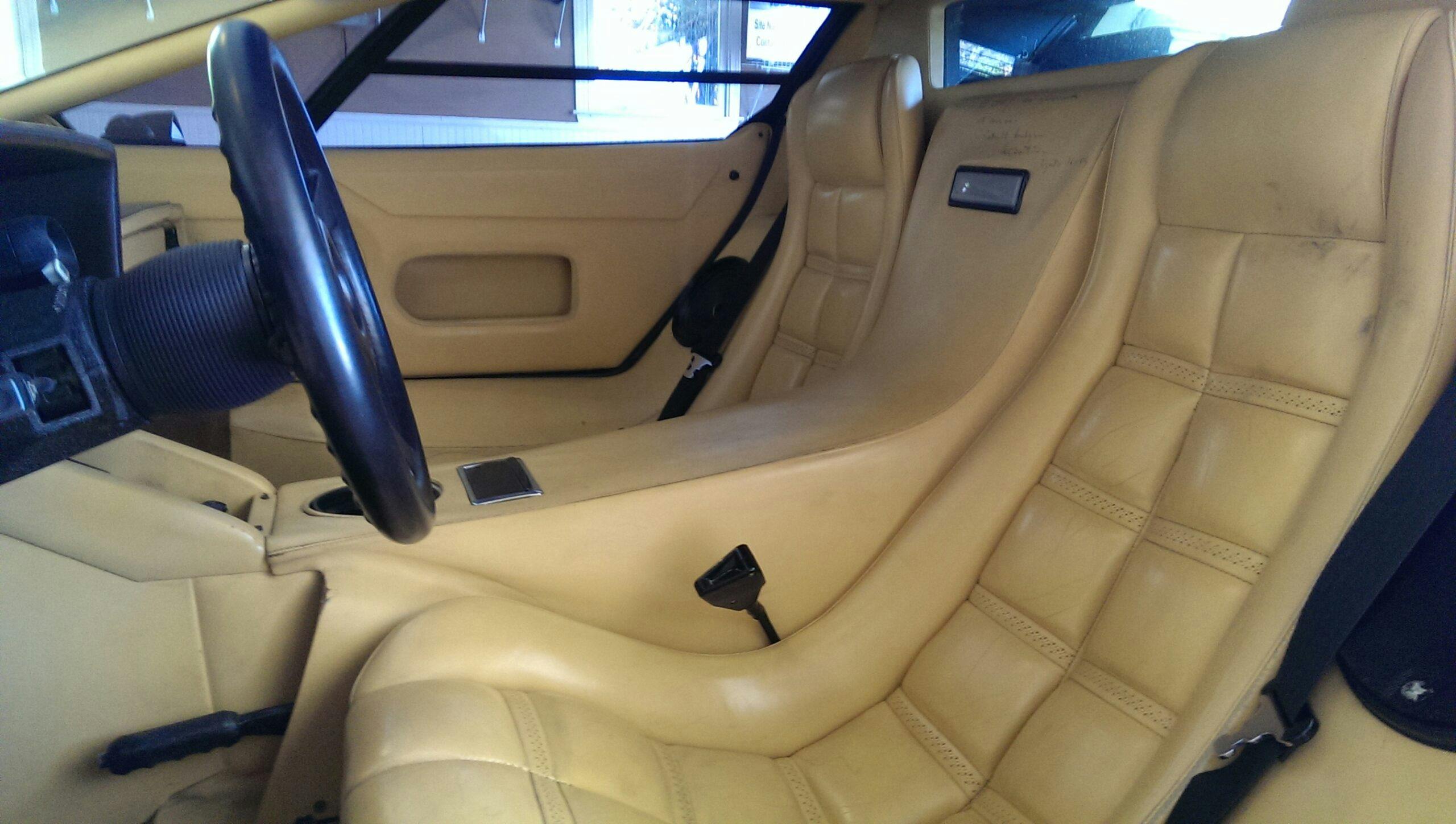

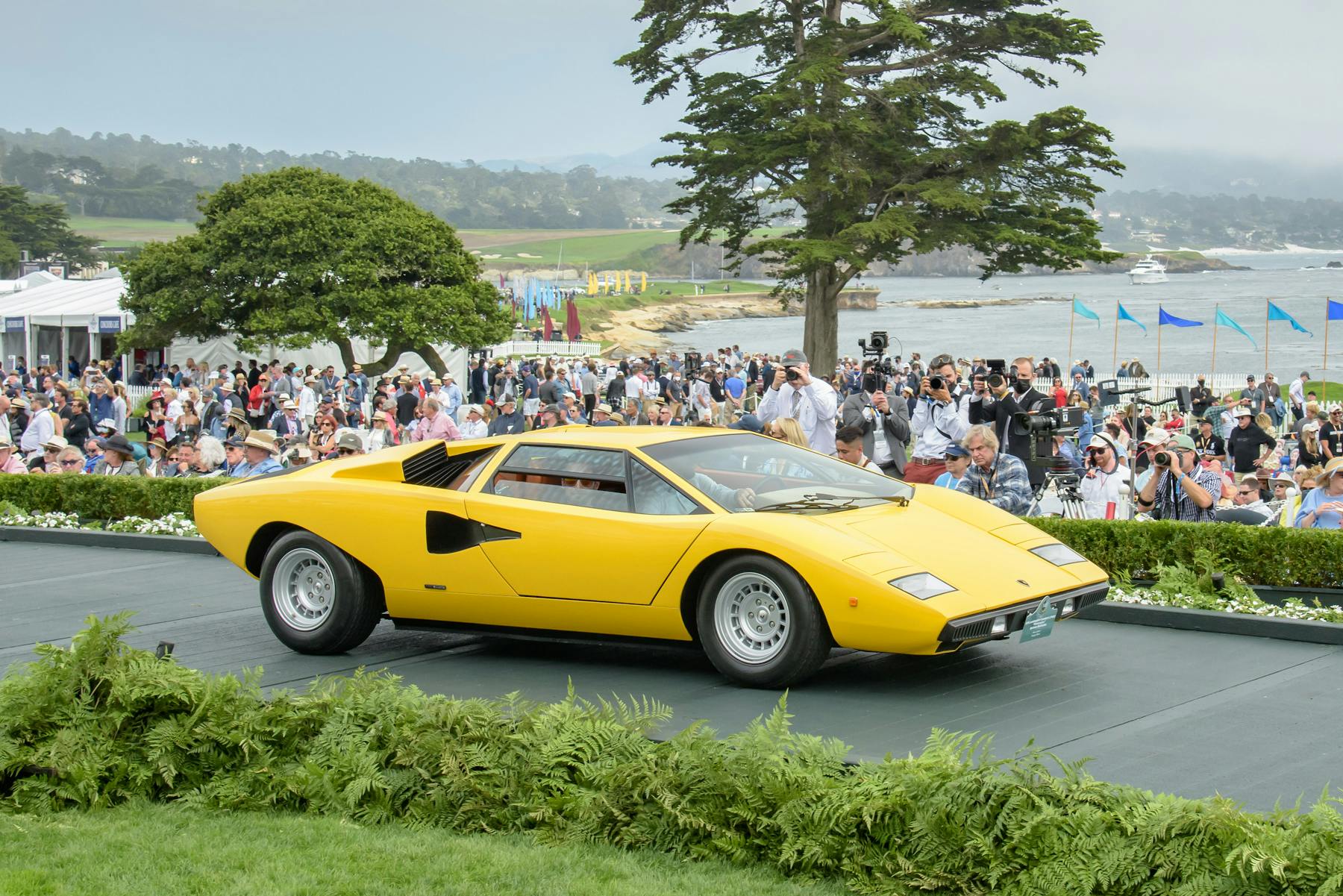
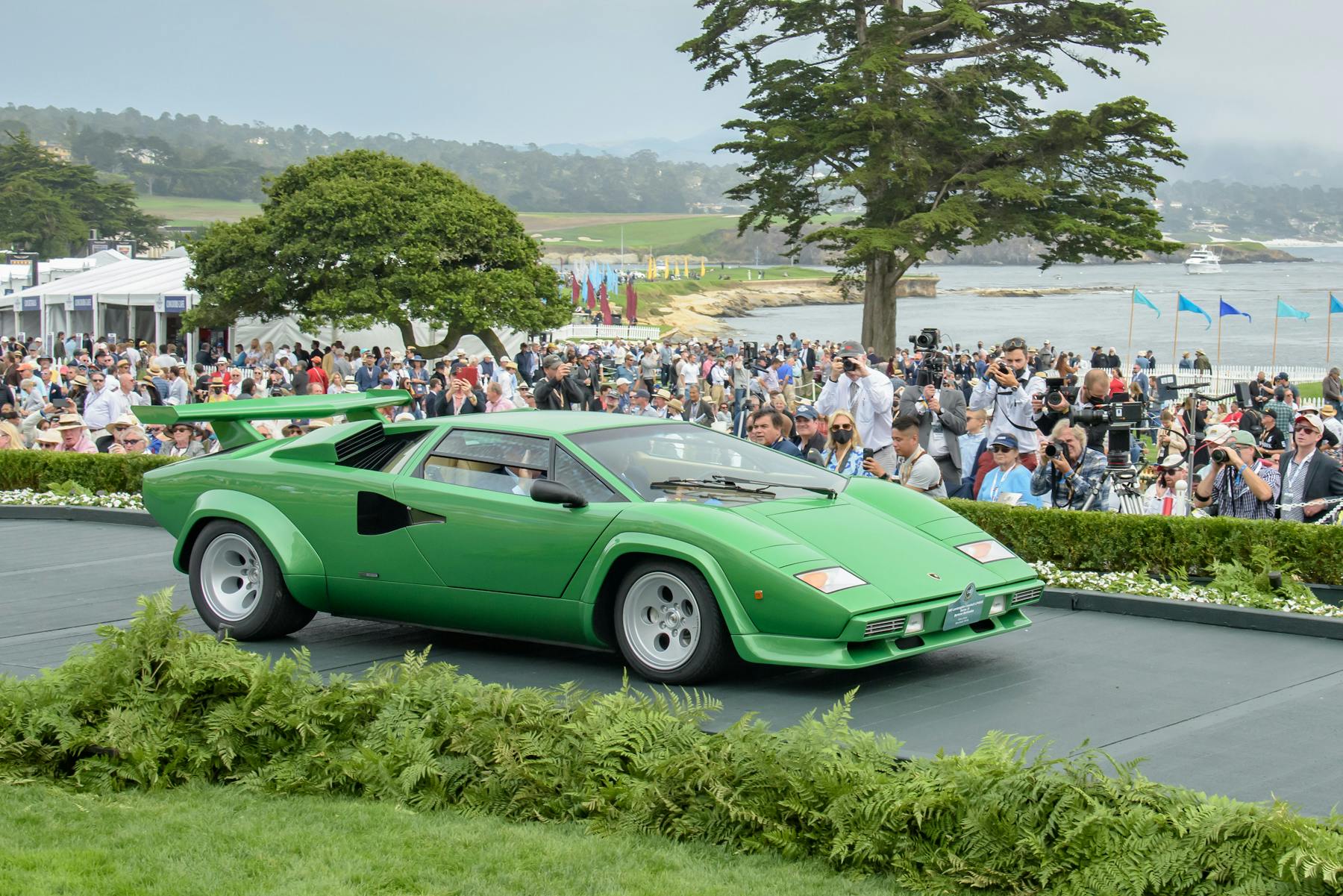


This has to be among the most ingenius scams so far. Get strangers to pitch in for my stuff!! The Balboni factor makes this example unique but otherwise, WTF?!?
That’s the whole point … good observation bud
That’s the whole point… looks like you can understand concepts. Proud of you!
what color is your Countach?
I can’t believe Hagerty basically regurgitated a press release for this guy.
Agreed. Very douchey character.
Let the guy pick up his own tab for restoration
If the subject isn’t to your liking, fair enough, but it is a phenomenon happening in the collector car world. That said, there is nothing regurgitated about the leg work Preston put into this story, including interviews with both Bulloch and Balboni.
Coke on Hagerty. This is not the kind of Journalism you should be writing or promoting. It’s a puff piece for a Gen X hack who’s looking for investors. Shame. Let this slime-bag peddle his NFT garbage somewhere else and pay for his own restoration then do a follow up on the driving experience with Balboni.
Adam- you really did something here. Especially with slim – bag , a twist to your irrelevant, sad, jealous opinion.
How is this any different than investing in a stock? You can’t buy the entire company so you purchase a slice of the pie. The value of the car goes up, so does your investment. Great idea Mr Bulloch. I wish I’d thought of it.
I too, would like to announce that I am also starting an NFT fractional ownership experience for my Lamborghini Countach. Send me ten bucks, I will let you come to my house and indulge in a five-minute test drive on my Hot Wheels test track, complete with high-banked turns and 360° loop. There is also a catered lunch of pop Tarts and Shasta.
Get on the ground floor now, and enjoy this Lamborghini experience for yourself!*
*Offer only available on non-school nights.
Beautiful car, hot wife, friends with Balboni. I think I see the pattern here with the parents basement dwellers.